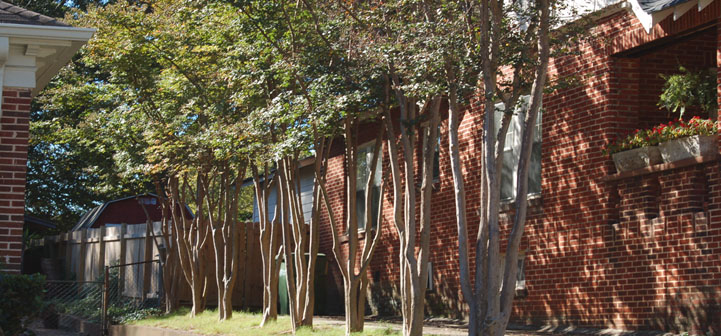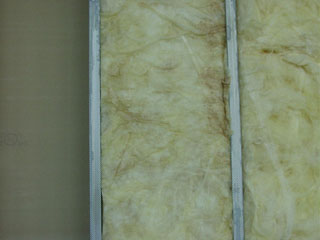Reviewed and Revised on 11/13/2013
Properly insulating your home will not only help reduce your heating and cooling costs, but also make your home more comfortable.
How does insulation reduce heat transfer?
Insulation is rated in terms of thermal resistance, called R-value, which indicates the resistance to heat flow per square foot of cross-sectional area perpendicular to the direction of heat transfer. Heat transfer is accomplished by conduction, convection, and radiation. Conduction is the transfer of heat from molecule to molecule, such as in a solid. Convection is the transfer of heat by the movement of a fluid. Radiation heat transfer is the transfer of heat by electromagnetic energy such as light.
R-value, as listed for most building materials, is a measure of the resistance to heat transfer by conduction. It is measured in such a way as to reduce or eliminate heat transfer by convection and radiation. If the insulation is an opaque solid, conduction is the only mode of heat transfer. Much fiber glass insulation is of open construction in which some heat transfer by convection or radiation is possible. Convective transfer within the insulation is helped by long vertical installations, by heating from below or on one side, and by large temperature differences—a knee-wall between a conditioned room and an attic combines all of these. Radiation heat transfer within the insulation occurs when the radiative energy travels in a direct line-of-sight path through the air spaces, or is reflected by the glass fibers through the air space. The magnitude of the radiation transfer is highly dependent on the temperature of the source of radiation.
Radiation and convection within the insulation can reduce its expected resistance to heat transfer. If the radiative or convective heat transfer within the insulation is reduced, the insulation’s resistance to heat transfer increases. For example, you may have heard that foam sheets applied to a wall assembly increase the effectiveness of the fiber glass insulation in the wall cavity as well as providing insulation on its own. This is because the foam insulation reduces the convective and radiative heat transfer within the fiber glass insulation.
Insulations, such as radiant barriers, may be advertised as having an effective or equivalent R-value. This means that for the particular situation that the equivalent R-value was determined, the insulation is as effective as a comparative insulation–usually unfaced fiber glass—in reducing the heat transfer. It does not mean that it will produce the same results as insulations with the same rated R-value in installations other than that for which it was compared. R-value measurement standard assumes no air leakage through the insulation. Air currents in standard density fibrous batts and loose fill materials reduce their insulating values.
What does the R-value imply?
The higher the R-value, the greater the insulation effectiveness. The R-value of thermal insulation depends on the type of material, the thickness, and density. When calculating the R-value of a multi-layered assembly (e.g. insulation, drywall, exterior cladding, etc.), the R-values of each component are added. Each component has a different R-value, and when combined determines the overall R-value of the assembly.
How does installing the insulation affect how it performs?
The effectiveness of an insulated wall or ceiling also depends on how and where the insulation is installed. For example, compressed insulation will not perform to its full rated R-value. Also, the overall R-value of a wall or ceiling will be somewhat different from the R-value of the insulation itself, because some heat flows around the insulation through the studs and joists (thermal bridging). With careful design and proper installation, this short-circuiting can be reduced.
The key to an effective insulation system is proper installation of quality insulation products. A building should have a continuous layer of insulation around the entire building envelope—with no gaps or compression. Studies show that improper installation can cut performance by 30% or more.
What if the home still feels too warm or too cold even with attic insulation?
If your attic has ample insulation and your home still feels too warm in the summer and cold in the winter, chances are you need to add insulation to the exterior walls as well. However, in some climate regions it is rarely (if ever) cost effective to add wall insulation to an existing home unless the walls have been opened for some other reason. Before considering this option, check the ductwork and heating, ventilation, and air conditioning (HVAC) equipment to determine if the problem is HVAC-related.
How can I determine how much wall insulation is in the home?
Determining the level of wall insulation in an existing home is difficult. Turn off the electricity while conducting your investigation. Using a screwdriver, remove the cover on some of the electrical outlets (or phone jacks) located on exterior walls. Using a flashlight, small mirror, and a ruler, determine the type and thickness of the insulation by peering in and looking along the sides of the electrical/phone box. Don’t forget to turn the electricity back on when you’re finished. If you don’t feel comfortable “looking around,” have a professional do this for you. Professionals often use infrared thermography to “see” and “measure” the wall R-value.
Whole wall R-value concept has been gaining attention for walls built with high R-value.This extension article gives additional information about the concept.
What other insulation factors should I consider?
Properly insulating your home will not only help reduce your heating and cooling costs, but also make your home more comfortable. See the U.S. Department of Energy’s Insulation information about how insulation works, adding insulation to an existing house, selecting insulation in new home construction, where to insulate, types of insulation, and how to make the insulation in your home more effective.


